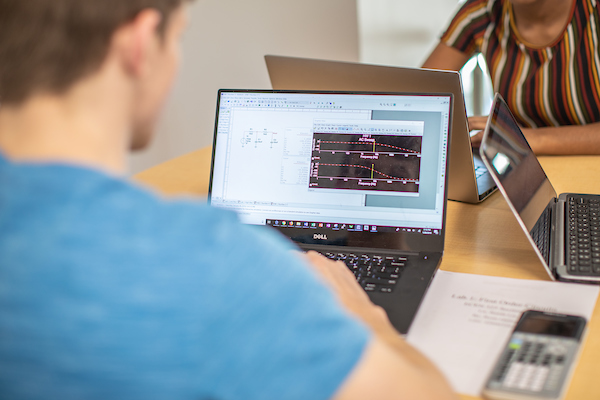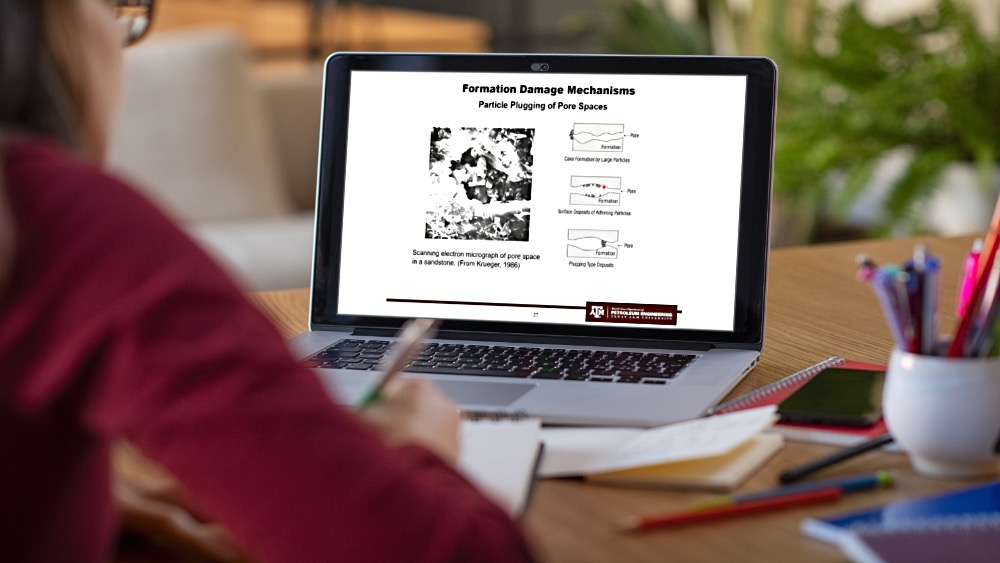Online Master of Engineering – Computer Engineering
The mission of the Department of Computer Science and Engineering is to develop the human and intellectual resources needed to meet the future technological challenges in the field of computing.
The Master of Engineering in computer engineering (MEng) should be thought of as a professional terminal degree. This degree does not include a thesis, project or final examination. This is a STEM distance program.
I'm ready to apply! Request Information
The Master of Engineering in computer engineering (MEng) should be thought of as a professional terminal degree. This degree does not include a thesis, project or final examination. This is a STEM distance program.
I'm ready to apply! Request Information

Overview
-
Advisory Committee
Master of Engineering in computer engineering students will have a default advisory committee consisting solely of the graduate advisor as chair.
Degree Plan
Requirements for the Master of Engineering in Computer Engineering degree include:
- At least 12 credit hours of graded computer science and engineering (CSCE) graduate coursework (excluding CSCE 681, 684, 685 and 691).
- At least six credit hours of graded electrical and computer engineering (ECEN) graduate coursework that is not cross-listed with CSCE (excluding ECEN 681, 684, 685 and 691).
- At least six credit hours of graded elective graduate coursework (excluding 681, 684, 685 and 691). This may include CSCE, ECEN or other approved graduate courses.
- At most, one three-credit 400-level CSCE or ECEN undergraduate course approved by the graduate advisor. This course does not count toward the 12 hours of CSCE-graded graduate coursework.
- One credit hour of CSCE 681 (Graduate Seminar).
- Up to three credit hours of CSCE 685 (Directed Studies).
- A total of at least 30 credit hours satisfying the above requirements.
Courses That Cannot Be Used on Any Degree Plan
- In CSCE, we do not allow 601, 602, 603, 701, 705, 706, 707, 708 and 709.
- In ECEN, we do not allow 714 and 749.
- In STAT, we do not allow 624 and 654.
- In MATH, we do not allow 679.
- In CYBR, we do not allow 601.
- In ISTM, we do not allow 601.
- Any course that contains material required of our undergraduate computer science (CPSC) or computer engineering majors.
- CSCE undergraduate courses 481, 482, and 483.
Other Degree Plan Information
- If you took CSCE 420 while a Texas A&M undergraduate and received a B or better, you should not take CSCE 625. Instead, take an additional prescribed elective class.
- If you took CSCE 421 while a Texas A&M undergraduate and received a B or better, you should not take CSCE 633. Instead, take an additional prescribed elective class.
- For stacked courses: If you have credit for an undergraduate class, you cannot get credit for the graduate class, except via Fast Track.
-
Stacked courses
When a graduate and undergraduate course is stacked, graduate students must take the graduate course in the stacked pair. If there are seats in the undergraduate section but not in the graduate section, you should contact the graduate advising office to request that a seat be reallocated. Reallocation can be requested but will have to be approved. Not all reallocations may be approved.
- The common stacked pairs are:
- 402/702 (always stacked)
- 410/611 (sometimes stacked)
- 411/629 (sometimes stacked)
- 413/713 (always stacked)
- 421/633 (always stacked)
- 433/627 (always stacked)
- 435/735 (always stacked)
- 440/640 (sometimes stacked)
- 445/656 (always stacked)
- 447/679 (sometimes stacked)
- 448/748 (always stacked)
- 451/652 (always stacked)
- 452/752 (always stacked)
- 463/612 (always stacked)
- 465/765 (sometimes stacked)
- 469/614 (sometimes stacked)
- 477/703 (always stacked)
- Texas A&M undergraduates can receive credit for both courses in an undergrad/grad course pair under Fast Track.
- Prerequisites listed for CSE graduate coursework are given to inform you of the knowledge you are expected to have to be successful in the graduate course. While our department does not block registration based on prerequisites for graduate courses, you are still responsible for ensuring you are prepared to meet course prerequisites. If you have concerns regarding preparation for a particular class, you should contact the graduate course instructor for more information regarding expectations.
For additional information and clarification, please see the graduate catalog and the department’s graduate program webpage.
- The common stacked pairs are:
Degree Highlights
78
Total Faculty (Fall 2023)
493
Enrolled Master's Students (Fall 2024)
20+
Research Areas
